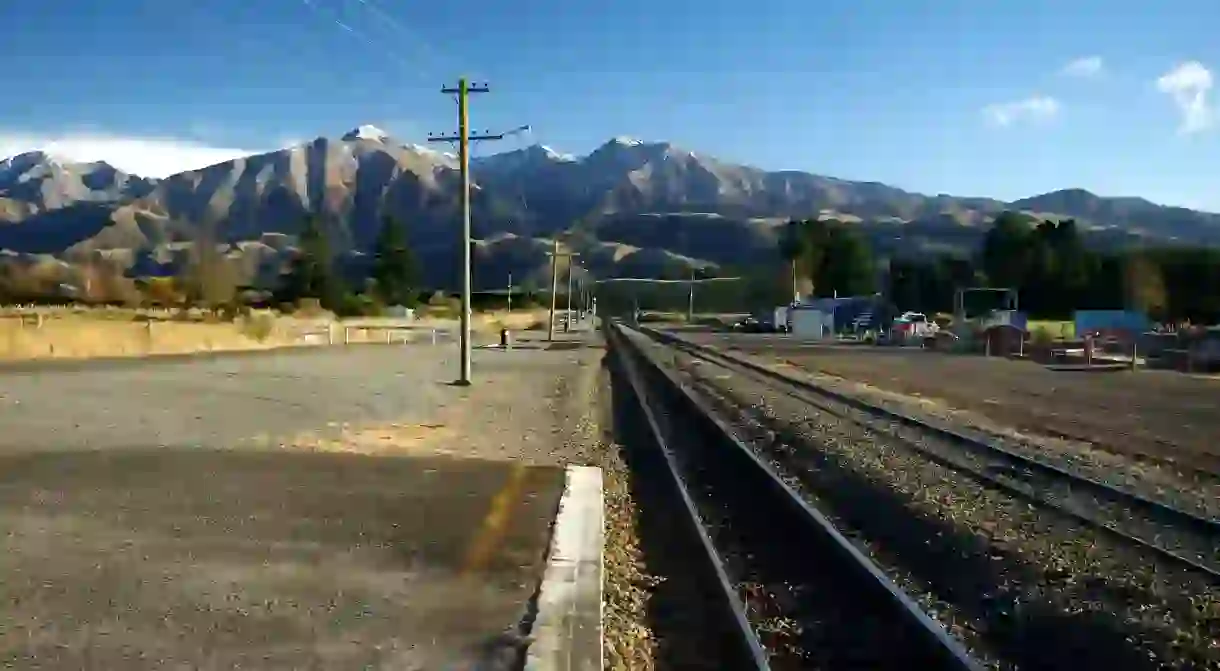A Traveller's Guide to The TranzAlpine Railway, New Zealand

If you want to immerse yourself in the contrasting landscapes of the South Island, a trip on the TranzAlpine Railway is the best way to do it. The five-hour journey is known for being the most picturesque in New Zealand — and there’s a good reason for it.
The train, which has been doing its rounds for more than 30 years, works its way inland as it travels 223 kilometres (139 miles) from the eastern coastlines of the South Island to the West Coast. Throughout the trip, a smorgasbord of geographic wonders come into full view: think glacial rivers, country pastures, rolling hills and dramatic alpine scenery.

With so many natural gems on offer, it’s no wonder that the trip continues to attract visitors from all over the world. In fact, its fame is such that National Geographic Traveler magazine placed it among some of the finest train rides in the world, alongside the likes of the Glacier Express in Switzerland, Russia’s Golden Eagle Trans-Siberian and Australia’s The Ghan.
Remember that this is a very popular trip. In the early 2000s, some 200,000 passengers were boarding the TranzAlpine each year; in the 12 months to June 2017, more than 100,000 people took the journey. For travellers wanting to see a piece of the TranzAlpine action, this can only mean one thing: securing a ticket well in advance — especially in the summer months (Dec–Feb) when it’s the high tourist season.

The route runs daily from Christchurch to Greymouth and back. It departs Christchurch Railway Station bright and early, at 8:15 a.m., reaching its final West Coast destination at 1:05 p.m.; a one-hour break follows before the train starts making its journey back home. If you travel from Greymouth to Christchurch, you’ll leave at 2:05 p.m. to reach the Garden City at around 6:30 p.m.
Ample seating and wide panoramic windows ensure that all passengers get a front-seat glimpse of the emerging scenery. If you want to stretch your legs at any time during the trip, there’s also an outdoor viewing carriage that provides uninterrupted vistas and plenty of photo opportunities.
You don’t need to bring any food on board, unless you’re packing provisions for a day trip. The licensed Cafe Carriage serves snacks, hot food, sandwiches, baked treats, coffee and even wine if you’re feeling extra indulgent.

First among the trip’s scenic highlights is the extensive patchwork of the Canterbury Plains. The region is one of New Zealand’s primary agricultural spots, and the surrounding pastures are an epic sight throughout the seasons. As the TranzAlpine roams through the countryside, the town of Springfield comes into view — and with it comes the first glimpse of the Southern Alps, the breathtaking mountain range that cuts through almost the entire length of the South Island.

From Springfield, the trip meanders northeast to traverse the Waimakariri River gorge. The braided river is among the largest in the region and its bright blue waters will come in and out of sight as the train makes the ascent towards the Craigieburn Range. On the way, the TranzAlpine also traverses 15 different tunnels and four dramatic viaducts — among which is the Staircase Viaduct, which carries the rails across a staggering 72 metres (236 feet) above the stream.

Towards the far end of Craigieburn Straight, the scenery changes once again. The high plains start spreading out, giving passengers a glimpse of Mount Binser and the edge of Arthur’s Pass National Park before connecting again with the Waimakariri River to reach Arthur’s Pass village. This is one of the most popular stopovers along the route; many visitors opt to disembark the TranzAlpine in Arthur’s Pass to explore its exquisite alpine terrains (there are quite a few walking and hiking trails around to keep them busy) and catch the train back to Christchurch later in the day.

Now it’s time to cross over from Canterbury to the West Coast. From Arthur’s Pass, the train starts to descend through the Otira Tunnel, which covers a length of 8.5 kilometres (5.3 miles) and is the longest tunnel in the entire trip. The completion of the Otira Tunnel in 1923 was the final step in establishing the Midland Line in which the TranzAlpine travels.

As you come out the other end, the vistas become remarkably different. The West Coast is renowned for its wet weather and vibrant green forestry; the descent towards Greymouth in particular is dotted by river valleys, mountainous hills and rocky riverbeds. Before reaching its final stop, the train makes a loop around the valleys to reach the town of Moana, right by the banks of Lake Brunner, connecting to the Arnold River valley before reaching the Grey River and arriving in Greymouth — thus concluding this leisurely, photogenic expedition.














